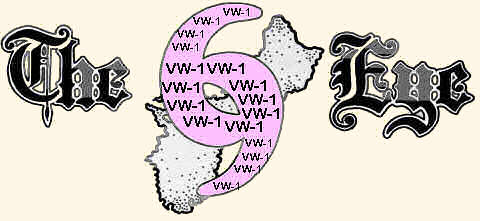
Contrary to popular belief, the Calendar Inspection Branch does not slip into the various squadron spaces, inspecting office calendars for nasty notes on the pages. They deal in aircraft inspection, scheduled on the basis of a certain calendar, or time, interval. Hence the term "Calendar Inspection." In the case of squaron aircraft, the unfailing, trustworthy and beautiful (?) EC/WC121K/N, the interval is established at thirteen weeks. Each of the aircraft is phased through, searching inspection every 91 days. These inspections, and the follow-up repair actions, serve to increase aircraft readiness and insure flight safety during weather, training, AEW, and trans-PAC operations.
Let's follow an aircraft through a typical Calendar inspection. To insure that the actual "look phase" of the inspection can commence on Monday, it is necessary that a pre-dock operation be conducted previously on Sunday. This pre-dock operation consists of turning up all engines and functionally checking all aircraft systems for proper operation, leakage, etc., as well as thoroughly checking out the air conditioning and pressurization systems to guarantee crew comfort and efficiency in flight.
Monday morning sees the "bird" being brought into the nosedock where the busy bees of Work Center 140 commence to look into, over, under, around and through the entirity of the aircraft. Any discrepancies discoverd during this "look phase" are noted on a Maintenance Action Form for correction during the "fix phase", the next step in the Calendar Inspection procedure.
Upon completion of the look phase, the fix phase is initiated. There is no flourish of trumpets to usher out one and herald in the other, but a noteworth change of tempo occurs. All discrepencies, regardless of seriousness, are either correctd or parts are placed on order for their correction.
After all possible work is done and all downing discrepancies are corrected, the Work Center Maintenance Control register containing an entry for each corrective action accomplished on a Maintenance Action Form, is cleared and returned to Maintenance Control, and the aircraft is released for test flight. After all test flight discrepencies are corrected the aircraft is returned to service.
In addition to the accomplishment of aircraft inspection, certain components which reached or are approacking the operating service life determined by Naval Air System Command are replaced.
For planning purposes, each aircraft is scheduled for five days of Calendar Inspection each thirteen weeks, This inspection is normally completed during the fourth day, the test flight flown the morning of the fifth day, and test flight discrpancies are corrected the fifth afternoon.
Agreed, there are more times than not when the aircraft is in check for more the the allotted 5 days. This is attributed to non-availability of parts, and at times, inclement weather. The supply situation is on the upswing, and with just a little luck, the Calendar Inspection Branch will have had delivery of the new maintenance platforms and will be working in the hanger prior to the advent of the 1968 Weather Season.

Page Added 05/03/16
This VW-1 newsletter is courtesy of Ronald Miles AE3 VW-1 67-69 TE-8.

VOL. 2 NO. 1 NAS AGANA, GUAM
April 1968
April 1968